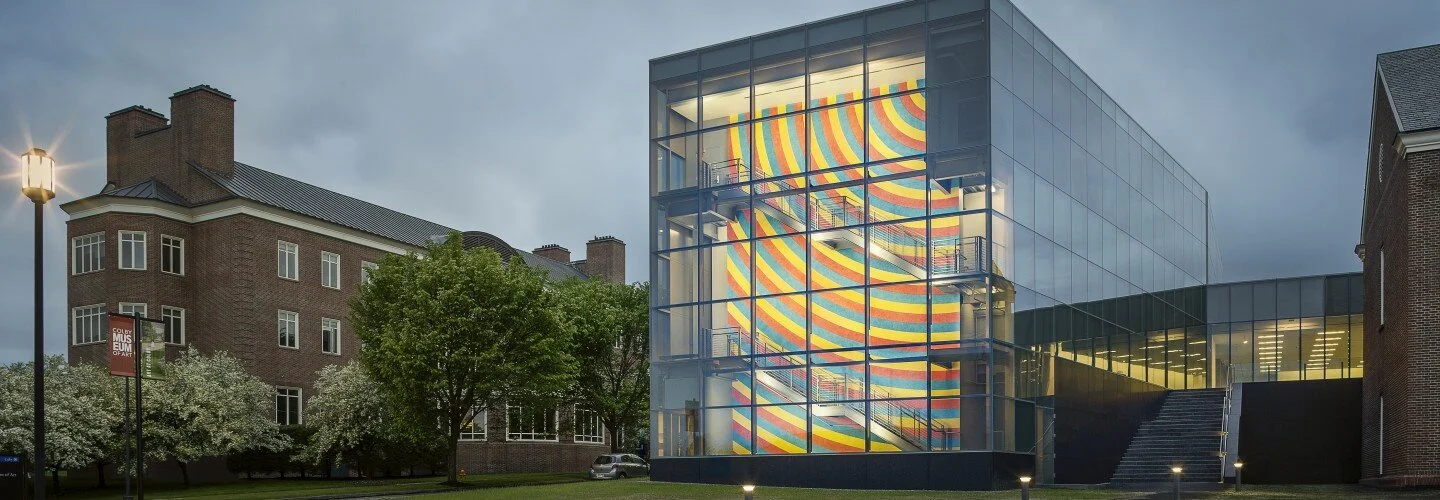Installation view of the show SEED-O-MATIC at the Colby College Museum of Art, Waterville, Maine, through May 8.
The museum (remarkably large for a small , if well-endowed, college), explains that the artists Emma Dorothy Conley and Halley Roberts created the show in conjunction with the Center for Genomic Gastronomy (CGG), which is dedicated to researching, prototyping and inspiring a "more just, biodiverse, and beautiful food system". As large agrochemical companies buy out seed suppliers and patent their genetic information agricultural biodiversity and food sovereignty are threatened.
Colby College Museum of Art
Photo by Colby Mariam
Waterville used to be a bustling factory town; now it’s best known for Colby. A Wikipedia entry notes:
“The Kennebec River and Messalonskee Stream provided water power for mills, including several sawmills, a gristmill, a sash and blind factory, a furniture factory, and a shovel handle factory. There was also a carriage and sleigh factory, boot shop, brickyard, and tannery. On Sept. 27, 1849, the Androscoggin and Kennebec Railroad opened to Waterville. It would become part of the Maine Central Railroad, which in 1870 established locomotive and car repair shops in the thriving mill town….
‘‘The Ticonic Water Power & Manufacturing Company was formed in 1866 and soon built a dam across the Kennebec. After a change of ownership in 1873, the company began construction on what would become the Lockwood Manufacturing Company, a cotton textile plant. A second mill was added, and by 1900 the firm dominated the riverfront and employed 1,300 workers. …. The iron Waterville-Winslow Footbridge opened in 1901, as a means for Waterville residents to commute to Winslow for work in the Hollingsworth & Whitney Co. and Wyandotte Worsted Co. mills, but in less than a year was carried away by the highest river level since 1832. Rebuilt in 1903, it would be called the Two Cent Bridge because of its toll. In 1902, the Beaux-Arts style City Hall and Opera House designed by George Gilman Adams was dedicated. In 2002, the C.F. Hathaway Company, one of the last remaining factories in the United States producing high-end dress shirts, was purchased by Warren Buffett's Berkshire Hathaway company and was closed after over 160 years of operation in the city….
“In 1813, the Maine Literary and Theological Institution was established. It would be renamed Waterville College in 1821, then Colby College in 1867. Thomas College was established in 1894. The Latin School was founded in 1820 to prepare students to attend Colby and other colleges, and was subsequently named Waterville Academy, Waterville Classical Institute, and Coburn Classical Institute.’’
One Post Office Square, a multiple-use facility, in downtown Waterville













